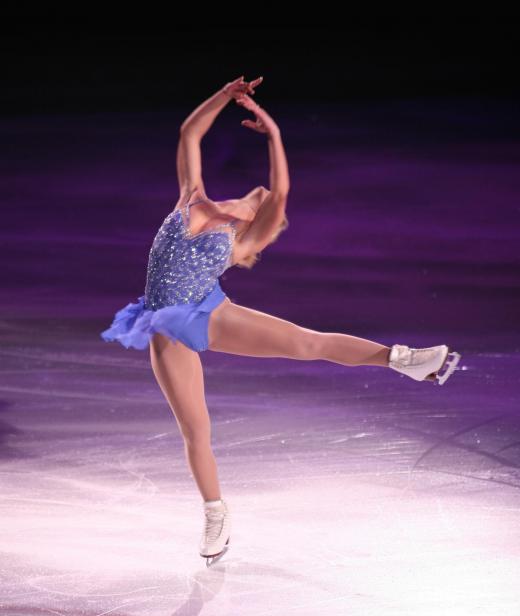Figure skating is probably the most popular ice skating sport. Its turns, jumps and other acrobatics demand particular ice skates. Figure skates consist of boots with a small heel and steel, hollow-ground blades that extend an inch or so past the back of the boot. Their curved fronts are serrated with toe picks that enable the skater to perform certain moves. Beginning figure skaters may have a cheaper skate with a vinyl boot, but the pros have leather boots, often custom fitted, with custom blades as well. Their skates may run into the hundreds of dollars.
Recreational ice skates look like figure skates, but are not as well-constructed, lacking much of the padding or support that a professional figure skater would require. These are the choice of people who simply skate for pleasure in rinks or outside. Children's ice skates are similar to adult skates. Some have hard plastic boots that help support the child's ankle and some even have double blades for extra balance. Recreational skates cost about US$40 and up, depending on quality.

Speed skates are completely different from figure or recreational ice skates. They are designed to optimize fast, forward movement, rather than the omni-directional movement that figure skates provide. Speed skate blades are much longer than the boot, usually about 16 or 17 inches. They are also flat, which aids in forward skating. A new innovation in speed ice skates is the "slap blade," a skate blade that detaches from the heel while the skater is racing, supposedly aiding in forward momentum. Boots may be made of lightweight leather or another durable, yet flexible material that allows the foot to move in a natural running position.

Hockey skates are yet another variant in the world of ice skates. Hockey skates have a boot that angles the foot forward and looks more like an athletic shoe. The blades are about the same length as the boot and are curved front and back to allow a skater omni-directional movement. Hockey skates must be very durable and able to stand up to being battered with hockey sticks, pucks, and other players' skates. Since they are used in a sport that requires quick movement in all directions, the boots are padded and designed like the best running shoes. Hockey players are usually on their ice skates for prolonged periods in competition, unlike speed and figure skaters, and must have boots with superior comfort and support.
